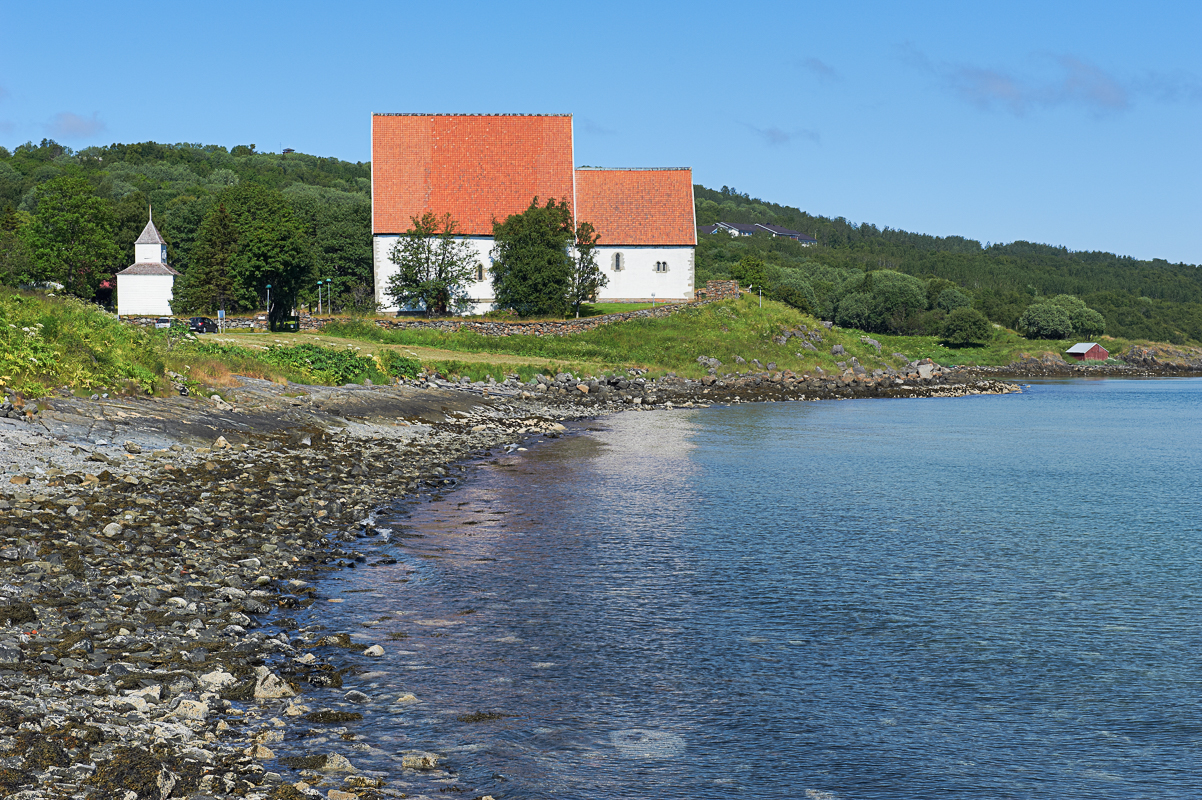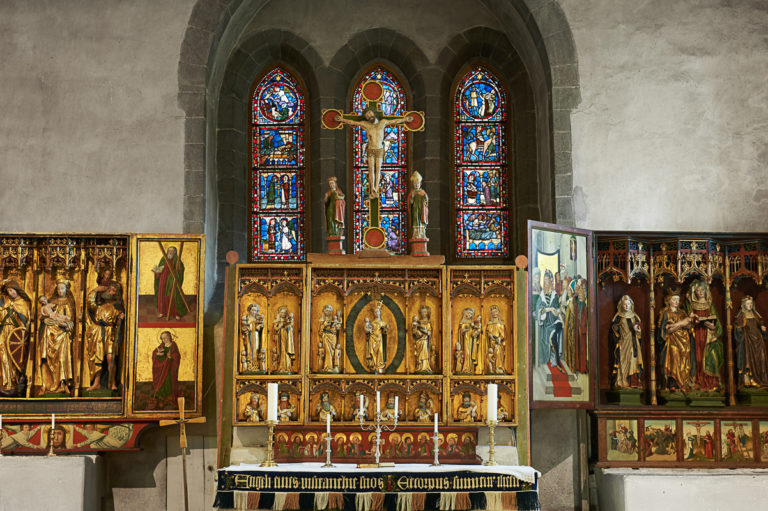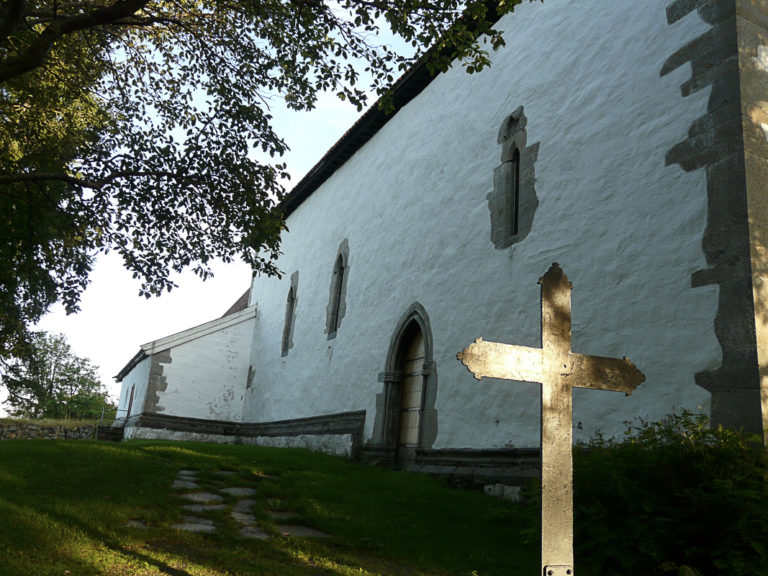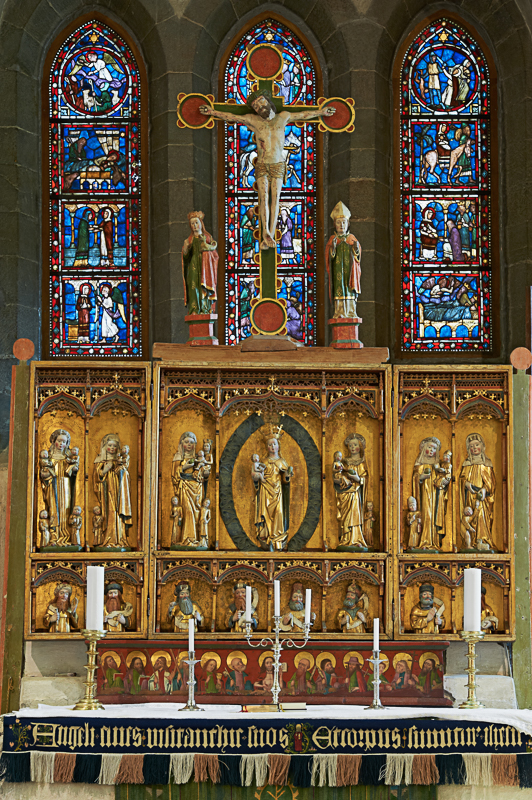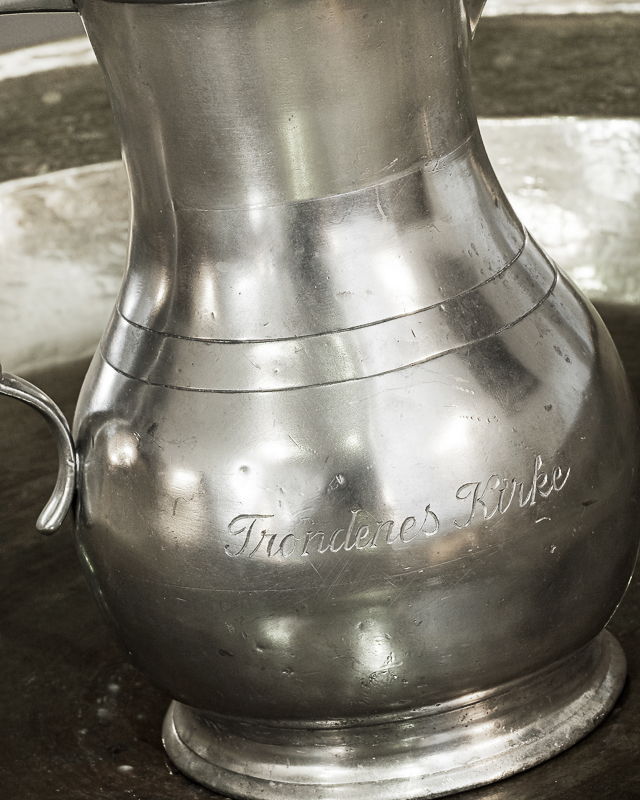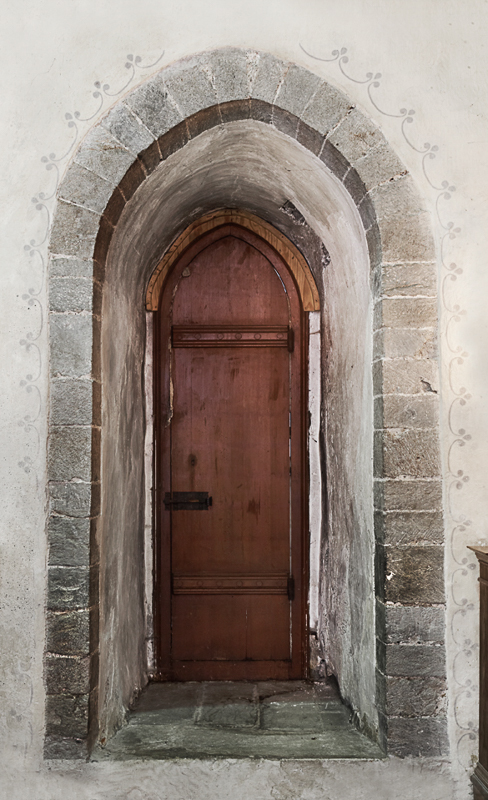For 750 years, the tall, white church at Trondenes has been reflected in the waters of Vågsfjord. Over the ages the northernmost mediaeval church in the world has provided protection to the people of the Harstad area – not just spiritually, but physically as well.
Trondenes kirke ble sannsynligvis reist på 1200-tallet, selv om noen mener den kan ha blitt bygd så seint som på 1400-tallet. Den kan ha blitt bygd i flere runder. Portalene har gotiske spissbuer og detaljer.
The church was also a fortress
It is likely that Trondenes Church was built in the 1200s, although some people believe that it only dates back to the fifteenth century. Of course, it may have been built in several stages. The doorways feature Gothic arches and details. Nevertheless, the church is a solid construction with thick walls, because it was also intended to serve as a defence installation. The narrow windows are positioned high up in the walls, as they were designed to be used as embrasures if the church came under attack. From the 1200s until the end of the fifteenth century, Northern Norway was often the target of devastating raids by the Karelians – a Finnish people allied with the Republic of Novgorod. The royal forces were often far away, so the locals had to learn to fend for themselves.
The church interior is a mosaic of time
The interior of the church is richly decorated with numerous details. However, it is quite simple in relation to what it must have looked like at the time of the Reformation. In the chancel, you can see the remains of chalk paintings that may once have decorated the entire church before being painted over after the Reformation. Three of the original nine triptychs have been preserved in the church.
The triptychs are church art treasures
The greatest treasures of the church are the three triptychs from the Late Middle Ages. The one in the middle is the finest of them all. It was carved by the German artist Bernt Notke, who also made triptychs in Lübeck for the entire Hanseatic world. Among his most famous works are the statue of St. George and the Dragon in Stockholm Cathedral and the “dance of death” altar in the Church of St. Nikolai in Tallinn. So how did art of this quality migrate all the way up to Trondenes? The answer to this question can probably be traced to the dried fish trade and the wealth it created along the coast of Northern Norway.
The Rococo interior resonates with the gothic
The choir screen and pulpit is in the rococo style from 1792, and is equipped with an hour glass. When the sand ran out, the priest had to stop his sermon. In the 1700s priests liked to drag out their sermons a little too long. The organ is from 1790, and is one of the oldest in Northern Norway. On the inside of the north door was a measuring stick, in case anyone needed to check the length of an ell (2 feet).
The church is surrounded by history
The churchyard walls are even older than the church itself. They date from the 1100s and were probably built to protect an earlier stave church that stood on the same site from attacks from the north and east. On the upper side of the church lies the inland lake Laugen, where the first Christians in the area were baptised in the 1000s. Farther up in the hills stands Trondenes fort, with its Adolf Guns from World War II. But that’s another story …
How to visit Trondenes Church?
The church is found on Trondenes peninsula, in the outskirts of the built up area in Harstad.
Follow the path along the beach north eastwards for a good 30 minutes to find the Church.
Of course! Trondenes historical centre, with a new medieval farm, is close by. On the hillside you’ll find the Adolf Canon and other historical monuments are signposted.
Check the homepage for Visit Harstad. Also remember to check opening times for attractions, times can vary depending on the season.
The church is found on the outskirts of the city of Harstad. For more information go to www.destinationharstad.no.
